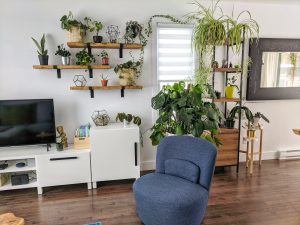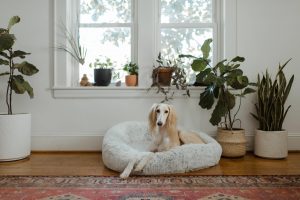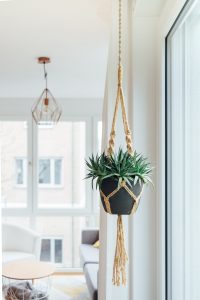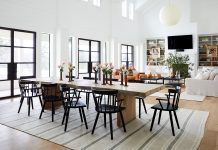Have you ever considered turning your house or office into a jungle full of vibrant plant life and greenery? According to research in 2020, seven in 10 millennials now consider themselves “plant parents,” and the demand for indoor plants is through the roof.
Could today’s younger generation be replacing children with plants? With skyrocketing house prices and stagnating wages, more and more millennials are choosing plants over babies. In this post, we look at how you can transform your own house, office space, or any indoor space into a mini jungle and become a “plant parent.”

What Is an Indoor Jungle?
An indoor jungle is born when people fill their living space with a plethora of green plants, flowers, and other foliage that resembles a jungle-like scene. However, there’s a bit more to an indoor jungle than meets the eye. The type of plants, the indoor planters used, and the plants’ positioning are all key.
With a little bit of creativity, you can transform your otherwise lifeless indoor spaces into a vibrant and lush jungle. Plants can help people relax, boost productivity, reduce stress, and boost morale. After the chaotic year of 2020, creating an indoor jungle might be just what’s needed to uplift our spirits.

How to Make an Indoor Jungle
Choose Plants Suited to the Light Levels of the Room
Is your intended space full of light, or is it like living in a cave? Depending on the level of light in your house or office, you will need to choose your plants carefully. Some plants require a lot of light, while others can thrive without.
The most common indoor plants that can withstand low levels of light and require very little maintenance include:

Group Plants Together
Get creative with your choice of plants and choose different sizes, shapes, foliage, and textures. A jungle has no rules and is dictated by the survival of the fittest. Your plants won’t be competing for survival like in nature, but there should be a wide variety of plants displayed.
Experiment with the grouping of plants to see what looks best. You may find some plants are best suited to different types of rooms.
For example, ferns look fantastic in bathrooms due to their unique textured leaves that create a waterfall-like effect when surrounded by water. Done right, it can feel like you’re showering under a warm waterfall out in nature.

Go Big and Dramatic (at Least Once)
No indoor jungle should be without a big dramatic floor plant (or three!). Adding different heights will add some depth to your indoor jungle scene. Some common floor plants include Bird of Paradise (Caesalpinia), Dragon Tree (Dracaena marginata), and Parlor Palm (Chamaedora elegans).
These big, dramatic plants work best when placed in the corner of rooms or empty, awkward spaces.
Don’t Forget to Hang
Hanging plants add a real jungle-like feeling to any room, so make use of your vertical and worktop spaces. Popular hanging plants include Swiss Cheese Vine (Monstera adansonii), Wax Flower (Hoya carnosa), and String of Hearts (Ceropegia woodii).
There are several types of ivy you could choose, including Pothos or Devil’s Ivy. But be warned, these plants love to grow (and quickly!).

Be Unusual
If you walk into a jungle, there’s no knowing what type of foliage you will encounter. Be sure to add some unusual plants to the mix to add some interest and replicate a real jungle. Embrace some randomness and consider adding plants like Cacti, Calatheas, Dieffenbachias, or Bromeliads.
The possibilities for your indoor jungle are endless. Before you get started, think about what plants you want to add and draw up some ideas of where you want to position them. But most importantly, have fun with it and enjoy your new life as a “plant parent.” Just make sure you water them when required and give them lots of love! Thanks to potsplantersandmore.com for consulting.
























